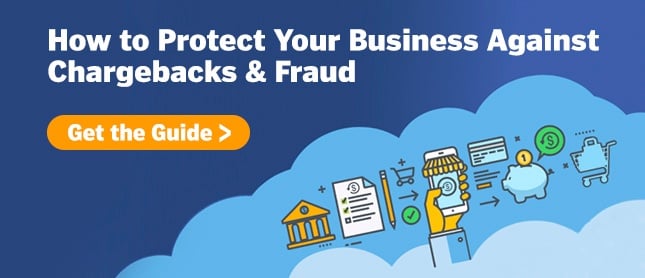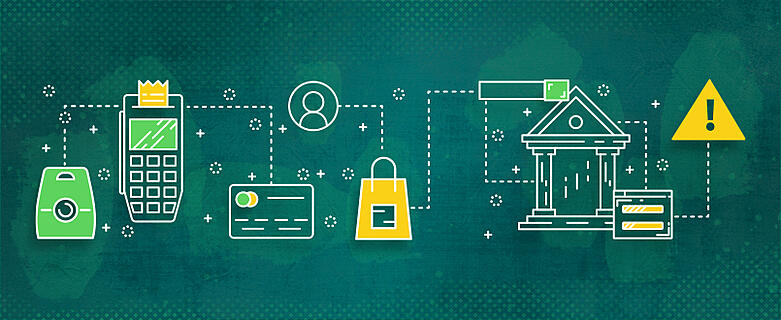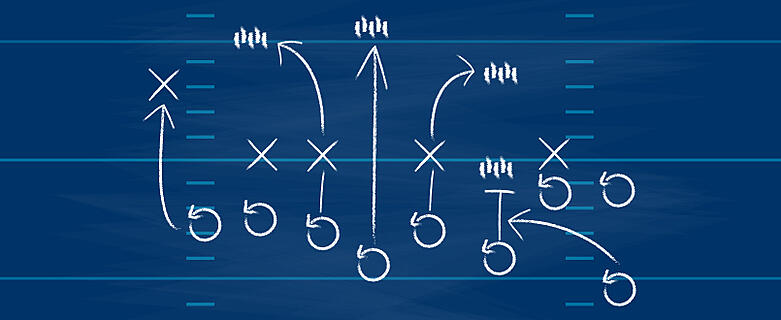News

Why Credit Card Chargeback Merchant Protection is Essential Today
Technological advances are great, but they have their drawbacks. In the case of card payments, one of the most significant downsides has to be chargebacks, which many merchants have learned the hard way over the last few years. It might be tempting to dismiss these costs as inevitable or negligible, but as any retailer that has experience with chargebacks will tell you, they certainly creep up.
The figures speak for themselves here. Individual chargebacks might not amount to much, but when combined together, merchants lose billions of dollars every year. Some estimates suggest merchants could lose up to 40% of their revenue due to chargebacks—and many of them fraudulent.
Even worse, there's the risk of card providers blacklisting retailers by putting them on the Terminated Merchant File (MATCH), a threshold that's usually reached after running up either 100 chargebacks or averaging about one chargeback per 100 transactions in a single month. This could ban merchants from having an account with that card provider for five years.
Clearly, the importance of a solid credit card chargeback merchant protection plan is self-explanatory. To explore why in further detail, read the article below carefully.
The True Cost of Credit Card Chargebacks
There's a dangerous assumption among merchants that chargebacks are only worth as much as lost sales. While it's true that a dispute results in the reversal of the transaction and the retailer returning the item's full value to the customer, this isn't the only cost involved in a chargeback.
The merchant also faces plenty of fees, such as:
-
Chargeback fees: A chargeback instantly results in a penalty from the bank worth between $15 and $40.
-
Marketing & Acquisition: By the time merchants make a sale, they've already spent significant amounts on activities related to marketing and customer acquisition. In some cases, this makes up 30–40% of a firm's revenue—all of which is lost after a chargeback is made.
-
Operations: It's not just marketing that businesses have to pay for. There are also the costs involved in order processing, including shipping, logistics, and picking. In total, this can easily reach 20% of total revenue.
To help build a better picture of what these numbers look like, here's a breakdown of the different costs outlined above (assuming a purchase worth $100).
|
Transaction value |
$100 |
|
Transaction fee (4%) |
$4 |
|
Product costs (23%) |
$23 |
|
Marketing costs (35%) |
$35 |
|
Operational costs (20%) |
$20 |
|
Chargeback fee ($25) |
$25 |
|
TOTAL |
$207 |
It might be hard to believe, but the transaction of $100 results in the merchant losing $207—significantly more than the value of the original good or service. That's far too much to ignore, yet many merchants don't realize the extent of the damage and shrug it off.
Of course, it's impossible to prevent all losses, but many disputes can be fought and reversed. When a retailer knows that they've delivered their product or service promptly and to the standard promised, they shouldn't have to give a consumer a refund just because it's a "cost of doing business."
The Impact of Credit Card Chargebacks on Merchant Accounts
One of the most important metrics in the chargeback world is undoubtedly the chargeback threshold, which payment providers use to set how many chargebacks a merchant can have each month without facing problems or being blacklisted.
Another measure to bear in mind is the maximum chargeback ratio, a percentage that represents the number of chargebacks divided by the number of transactions in one period (usually a month). If a merchant had 1,000 transactions in a month and had to issue 10 transactions, this would give them a chargeback ratio of 1%.
What happens when retailers surpass their card network's chargeback threshold or ratio? Ultimately, it can result in the network either closing the account or blacklisting them completely—it's no triviality. Retailers need to make sure this doesn't happen by monitoring their metrics continuously, which vary across card providers.
Visa
As chargeback thresholds and ratios go, it doesn't get much stricter than Visa. The network's early warning chargeback ratio is just 0.65% and once a retailer reaches 75 chargebacks in a month, they'll meet the chargeback threshold.
After reaching these figures, Visa enrolls its retailers in a pre-monitoring program. Or, if merchants rack up a 0.90% chargeback ratio (or more than 100 chargebacks per month), they must join the primary Merchant Monitoring program.
MasterCard
Although MasterCard isn't quite as stringent as Visa with its metrics, retailers still don't have much leeway. The monthly chargeback threshold is 100, while the chargeback ratio is 1%
Similarly to Visa, merchants who exceed these numbers must take part in a Chargeback Monitored Merchant program—and those who have a chargeback ratio above 1.5% (or 100 monthly chargebacks) are labeled as Excessive Chargeback Merchants.
American Express
While MasterCard and Visa have set figures for their merchants, American Express is slightly more flexible and considers more factors than just chargebacks. However, having a chargeback ratio above 1% or 100 chargebacks or more a month is likely to cause problems.
Discover
Discover is the most flexible card network of all—it doesn't even have any fixed rules for merchants to follow. Still, it's advisable for retailers to stick to a maximum of 100 chargebacks per month and a 1% chargeback ratio.
Credit Card Chargeback Liability for Merchants
One of the critical issues merchants face regarding chargebacks is that consumers can file them without needing any proof that they have a legitimate reason for filing the dispute. For instance, they could falsely claim an item never arrived in the post.
Instead, it's the retailer's responsibility to prove that the item arrived, the customer received good customer service, and the product/service was of satisfactory quality. It therefore shouldn't come as a surprise that many merchants end up in a constant battle against chargeback fraud and struggle to stay on top of disputes. Fortunately, no disputes are set in stone, and there's always the option to reverse a chargeback—although they will remain on the account.
This process works slightly differently for card-present transactions and card-not-preset transactions, so let's look at both cases in further detail.
Card-Present Merchants
Purchases made using physical cards—also known as card-present transactions—were once very susceptible to fraudulent transactions. Back when magnetic strip credit cards were all the rage, fraudsters could simply clone cards, but the introduction of EMV chip-based cards has made this harder.
It’s still possible, however, so merchants should take precautions by using EMV chip readable terminals for cards. This transfers liability from the merchant (or rather, their financial institution) to the issuing bank (the consumer's financial institution). Otherwise, the merchant will be financially responsible for any disputes.
In the case of true fraud, merchants aren't liable for chargebacks—but they are responsible for problems related to their service or product, like merchant errors or providing poor-quality goods.
Card-Not-Present Merchants
As for purchases that take place over the phone, internet, or mail—known as card-not-present (CNP) transactions—merchants are liable for all types of chargebacks by default unless they can prove they were fraudulent.
However, if retailers use 3D Secure Technology to verify their transactions, they can pass this liability on to the issuing bank. This way, when there are fraudulent or unauthorized transactions, it's not seen as the fault of the merchant—however they'll still be responsible for chargebacks due to issues like product quality and customer service.
Credit Card Chargeback Merchant Rights
The government introduced chargebacks to give consumers more rights, allowing them to fight against fraudulent retailers. Yet, in many cases, these new measures have actually ended up enabling fraudulent "consumers" at the expense of honest merchants selling high-quality goods and services.
Still, there are plenty of ways for retailers to take action and keep themselves safe.
First, all merchants can fight a dispute through representment, a legal process that can reverse a chargeback (if the retailer has sufficient evidence). This also has a benefit of encouraging fewer consumers to file disputes in the first place; they may realize they're better off simply going through the standard refund process.
However, representment is a complex process that doesn't always yield the desired result—if possible, it's better for merchants to prevent their customers from filing chargebacks in the first place. This is easier than ever now, with various chargeback-preventing services available. For instance, Ethoca and Verifi both offer chargeback alerts to make sure merchants know when consumers are filing disputes in real-time, making it easier for them to manage the process. Although most of these services come at a price, they usually save the merchants more money than they cost, and they also add an extra barrier against being blacklisted.
Comprehensive Merchant Protection for Your Business
It's clear that a credit card chargeback merchant protection plan is essential today. And a good plan requires not only the right tools, but also the right data-driven insights to tell you where and when to use them. It requires up-to-the-minute visibility into where your chargeback rate stands, and ways to reliably measure whether your methods are working or not.
MidMetrics provides all of these key attributes—a full suite of our own proprietary chargeback management tools, including Management Dashboards, In-Depth Analytics Tools, and On-Demand Reports. This gives you a comprehensive platform for fighting chargebacks and defending your merchant accounts, all for one price.
How much would it cost to cobble all these services together from different providers—and how effective would they be? MidMetrics is expertly designed to be easy to use, easy to integrate with your existing systems, and robust enough to provide actionable insights for every merchant's chargeback situation.
Want to see MidMetrics in action? Book a demo with one of our chargeback specialists today.
A solid chargeback protection plan is essential, but what is a good chargeback protection? What components does it need to have, and how can you tell if they’re working effectively? We’ve got answers for you in this helpful guide, How to Protect Your Business Against Chargebacks & Fraud.










